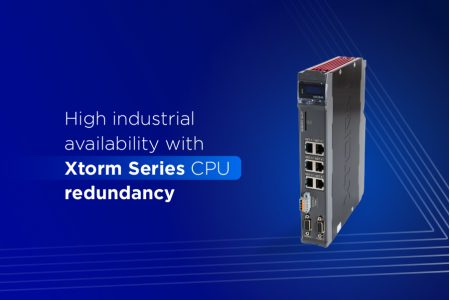
What is a gateway and why should I use it in my IoT applications?
Today, the action of connecting the smartphone to an available Wi-Fi network and browsing social media has become such a common habit that we do not even think of the technology involved for this to happen. About two decades ago, this reality was quite different. At that time, it was necessary to use dial-up modems to connect the computer to an available provider and browse the internet through the telephone network.
Okay, but what do dial-up modems and smartphones have in common with the topic of this article? Well, even separated by 20 years of technology evolution, both resources are considered gateways.
In the next few paragraphs, we will explain what it is, what it does, and why you should use a gateway in your IoT applications.
What is and what does a gateway do?
Gateway is a term in English that means gate or portal, a system or equipment whose basic function is to establish communication between multiple environments. With it, it is possible to make the connection between equipment located in different networks and that communicate through different standards. In summary and from a general perspective, it acts as a bridge between two universes, analyzing and treating information according to pre-established definitions and the type of function it is intended for.
In the industrial environment, they can be used as intermediaries for remote communication, sensors, actuators, transmitters and other field devices with the control and supervision systems in a production plant. In this case, the gateway acts as a universal translator for networks or equipment that operate based on different protocols, which means, it allows communication between different environments and architectures. It can, for example, receive data from frequency inverters through the CANOpen protocol, convert them into Ethernet standard packages and take that data to a SCADA supervision system via the MQTT protocol.
A gateway can also be a PLC with advanced technology that supports a wide range of communication protocols that act as a bridge between other controllers of different brands that operate based on different standards.
Why should I use a gateway in my IoT applications?
With the fast advance of digitization in industrial processes, it is increasingly common to see smart factories with applications for collecting and sharing data through connected machines, devices and production systems. In these environments, a programmable multiprotocol controller can be used to act as an IoT gateway, making the connection between the cloud and the control network PLCs, sensors or other smart devices. In this way, all data that travels between the process and the cloud would pass through the gateway.
The use of an IoT gateway can bring numerous benefits to the simplest applications in the industry, such as reduction of infrastructure costs, for example. Nowadays, the most advanced sensors on the market generate tens of thousands of data per second, which requires a high transmission capacity from the internet link. In order to avoid an unnecessary amount of data processing and, consequently, the need to expand investments in bandwidth, an IoT gateway can be used to mediate the connection between sensors and the database, sending to the cloud only the most relevant information.




